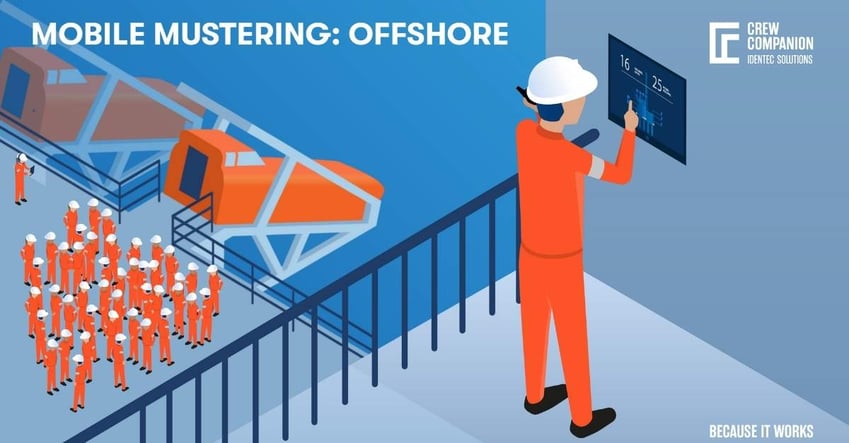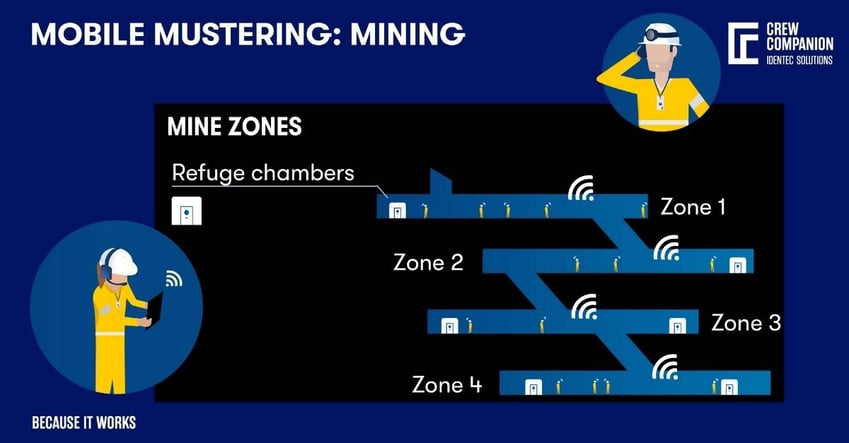Mobile mustering and why using it
| Written by Mark Buzinkay
A mobile mustering solution based on automatic scanning of the entire area will provide a much better overview of the situation and help direct teams where needed.

No video selected
Select a video type in the sidebar.
Imagine an emergency scenario — fire, bomb threat, gas leak — in which you must evacuate your building. The proper alerts have been sounded, people have arrived at the mustering location, and first responders are on the scene. But how do you know if everyone made it out? And where are the ones who remained inside?
Emergencies are just one of two main reasons to use mobile mustering solutions. The second: Training/mustering drills. In both scenarios, flexibility and real-time data accuracy are the key components of a proper (mobile) mustering solution.
In the past, security personnel may have grabbed a printed evacuation list on the way out to ease the manual counting and sorting of employees. Advancing to laptop computers allowed automate the process. Still, laptops often take precious minutes to start up and are data-dependent on the physical access control system (PACS), which may not be online during an emergency.
(Continue reading about Emergency Response Management)

Mobile mustering, which uses portable handheld computers that work online or offline, is equipped with readers to scan IDs and quickly assess mustering progress and statistics. The better idea is they check a dedicated zone automatically and show the mustering officer who arrived in the muster area without any manual interference. Because emergencies evolve quickly, data integrity is the top priority in mobile mustering. However, it comes down to this: Tracking employees and first responders quickly during crises can save lives.
Further reading: Offshore HSE and Crew Companion
At its core, a mobile mustering system involves deploying sensors or other tracking devices throughout the workplace to monitor employee movements. These sensors then relay information about employee location back to a central hub for analysis and decision-making. The benefits of using an employee mustering system include:
- Real-time tracking is one of the most significant benefits of using a mobile mustering system. With this system, staff data is collected and transmitted in real-time so that organisations can track workers' whereabouts at all times. This is especially beneficial in an emergency, as it can help organisations quickly identify where employees are located and ensure their safety.
- Enhanced accuracy is another benefit of using such an IoT-based mustering system. This system relies on precise sensors to collect employee data, which means that the data collected is more reliable than data collected manually. This is important in an emergency, as accurate data can be used to make decisions that could save lives.
- Scalability is another benefit of using an employee mustering system. This type of system can be easily scaled to meet any organisation's needs, making it a good choice for organisations with large or growing employee populations. Additionally, organisations can often customise an IoT system to account for unique needs and requirements.

The tablet or mobile phone for mobile mustering should withstand the elements and rough treatment since they are likely to be used outside. Rugged handheld tablets should be sealed against dust and liquids to at least IP65, operate in temperatures ranging from -20°C to 50°C and survive a 1-meter drop to concrete. They also should offer a sunlight viewable display.
If you want to learn more about mobile mustering, who is using it and how, download our free whitepaper "Mobile Mustering: Scenarios, Benefits and Technical Solutions".



